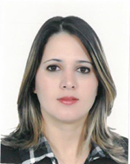Abstract
In the present piece of research, we argue that translation cannot be effective unless the purpose and the audience are clearly identified. One of the main lessons we have learned during this journey is the need for a thorough register analysis of the source text before translation, in addition to the necessity of embedding the target text in its immediate cultural environment within a critical discourse analysis. In this respect, an analysis of the article “Asymmetric struggle for the hearts and mind of viewers: Can the media actually trigger sympathy towards terrorists? (Maoz, 2010), which was translated by Badia Elharraki (2012), will give the reader an idea about the difficulty of translation because this article, if translated without some modifications at the lexical level, will have huge undesirable effects on the Arab/Muslim audience.
Keywords
Translation, Register analysis, Critical discourse analysis, Arabic, Ideology,Metrics
References
- Baker, M. (1992). In other words. Routledge.
- Baker, M. (1998). The Routledge Encyclopedia of Translation Studies. Routledge.
- Bar-Tal, D. (2000). From intractable conflict through conflict resolution to reconciliation:
- Psychological analysis. Political Psychology, 21, 761–770.
- Catford, J. C. (1965). A linguistic theory of translation. Oxford University Press.
- Chouliaraki, L., & Fairclough, N. (1999). Discourse in late modernity: Rethinking critical discourse analysis. Edinburgh University Press.
- Dowling, E.R. (1986). Terrorism and the media: A thetorical genre. Journal of Communication, 36(1), 12–23.
- Elharraki, B. (2012). Translating articles on media perception: shifts and Procedures. Unpublished Master Thesis. Sidi Mohammed Benabdellah University (Fez, Morocco).
- Fairclough, N. (1989). Language and power (2nd ed.). Longman.
- Fairclough, N., & Wodak, R. (1997). Critical discourse analysis. In T. van Dijk (Ed.), Discourse as social interaction (pp. 258-284). Sage.
- Fairclough, N. (1992). Discourse and social change. Polity Press.
- Fairclough, N. (1995). Media discourse. Edward Arnold.
- Gregory, M. (2001). “What Can Linguistics Learn from Translation? In E. Steiner & C. Yallop (Eds.) Exploring translation and multilingual text Production (pp.19-40), De Gruyter.
- Halliday, M. (1970). Language structure and language function. In J. Lyons (Ed.), New horizons in linguistics (pp.140-165).London: Penguin.
- Halliday, M. A. K. (1973). Explorations in the functions of language. Edward Arnold.
- Halliday, M. A. K. (1985). An introduction to functional grammar. Edward Arnold.
- Halliday, M. A. K. (2001). Towards a theory of good translation. Steiner, E., & Yallop, C. (Eds.). (2001). Exploring translation and multilingual text production: beyond content (Vol. 3). Walter de Gruyter.
- Hatim, B. & Mason, I. (1990). Discourse and the translator. Longman.
- House, J. (1981). A Model for Translation Quality Assessment. Narr.
- Jorgensen, M., & Phillips, M. (2002). Discourse Analysis as theory and method. Sage Publications.
- Liebes, T., & Kampf, Z. (2009). From black and white to shades of gray: Palestinians in the Israeli media during the second Intifada. International Journal of Press/Politics, 14, 434–435.
- Maoz, I. (2010). “Asymmetric struggle for the hearts and minds of viewers: Can the media actually trigger sympathy towards terrorists?”. Dynamics of Asymmetric Conflict, 3(2), 99-110. DOI:10.1080/17467586.2010.531036
- Munday, J. (2008). Introducing translation studies: Theories and Applications (2nded.), Routledge.
- Newmark, P. (1981). Approaches to translation. Language and teaching series. Pergamon.
- Stubbs, M. (1996). Text and corpus linguistics. Blackwell Publishers.
- Van Dijk, T. (1995). Discourse, semantics and ideology. Discourse and Society, 6(2), 243-289.
- Venuti, L. (2008). The translator’s invisibility: a history of translation. Routledge.
- Yan, X. (2007). On the role of ideology in translation practice, US-China Foreign Language, 5/4, 63-65.

 Articles
Articles




